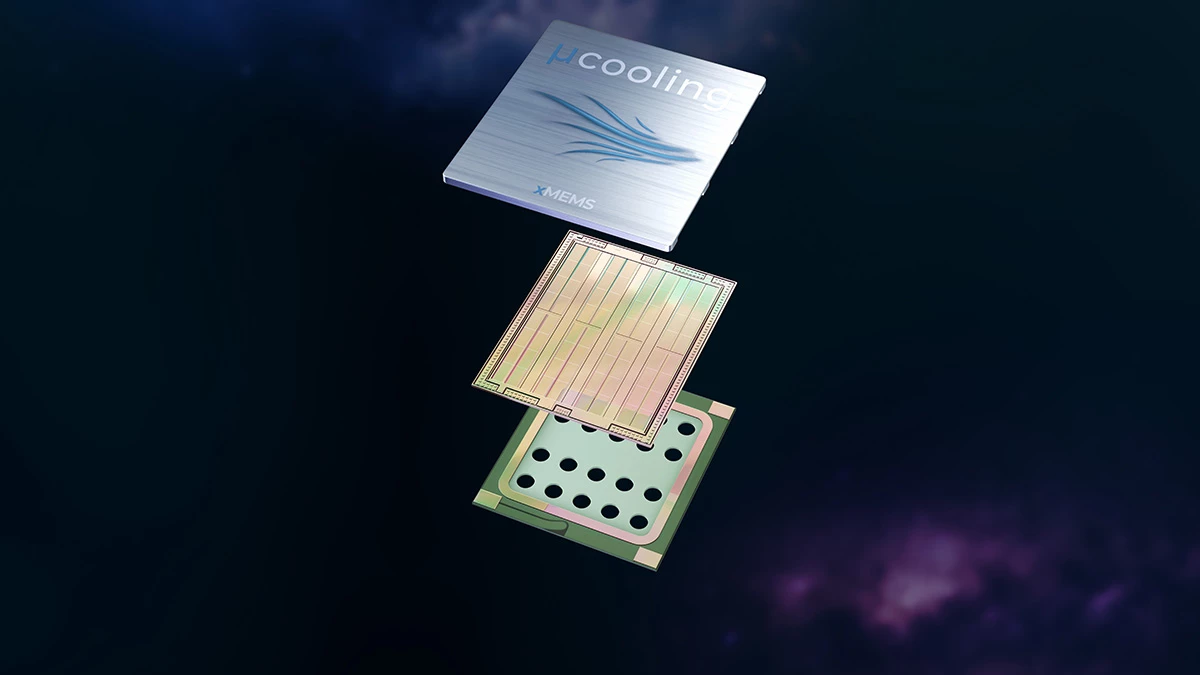As our personal devices get smaller and are expected to do more stuff – whether that's your phone, a smartwatch, or a wearable AI assistant – they also tend to get hotter on the inside. That means it can be hard for them to deliver consistently fast performance, fit more components inside, or avoid getting too warm to handle.
Cooling compact gadgets that don't have room to spare for a fan can be a challenge. And that's where xMEMS' latest technology comes in. The company's fan-on-a-chip tech can deliver airflow in extremely tight spaces like the guts of your phone with just 1 mm of headroom.
xMEMS' tiny cooling devices feature a thinfilm piezo layer in the chip that moves a silicon membrane up and down at ultrasonic frequencies (in the hundreds of kilohertz range) when a voltage is applied. That generates air pressure inside a chamber in the cooling chip, which also has a teeny tiny release valve that can open and close rapidly. When that pressure reaches a certain level, the valve opens to release that pressure, creating airflow. You can see a visualization of this in the first 20 seconds of the video below.
These compact devices are mounted to the top of silicon chipsets to dissipate heat and essentially replace a passive cooling system. For example, the processor in your phone which can heat up when you're running demanding apps, and a cooling chip could help it avoid throttling performance and getting too warm.
The cooling chips xMEMS is working on are absolutely miniscule: 9.3 x 7.6 x 1.13 mm. For reference, a microSD card that goes in your phone or action camera measures 15 x 11 x 1 mm.

Beyond their ability to spread and expel heat, a major benefit of these compact cooling chips is that they can be installed to perform exactly where they're needed within tight confines of hardware products – rather than cooling a larger area on the inside.

Interestingly, Santa Clara, California-based xMEMS leverages its piezoelectric technology for airflow generating chips, as well as for next-generation ultrasonic speakers. The company says this approach offers greater clarity and reduced breakup than traditional compact speaker technology, while also being dust and water resistant.
xMEMS is set to begin mass manufacturing its cooling chips early next year, at which point it hopes they will be slotted into smart glasses and other wearable tech. The company notes that as smart glasses become more advanced, the amount of power they draw (total device power or TDP) is expected to go from 0.5-1-W levels to beyond 2 W, which means they could feel warm against your skin. xMEMS says its chips can slash the operating temperature in these glasses by 40%.
It's worth noting that xMEMS isn't the only company working on new-age cooling technologies. There's also San Jose-based Frore Systems, which makes larger and arguably more heavy-duty solid-state cooling chips for drones, cameras, and other hardware. The applications for the chips in both firms' portfolios have some overlap, and it will be interesting to watch them compete in the microcooling space with future innovations.
Source: xMEMS





